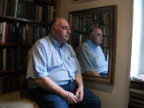 The mythological princess Cassandra. [1]
The mythological princess Cassandra. [1] Futurists are always mindful of the story about Cassandra. To remind us, Cassandra is the princess in Greek mythology who was both blest with perfect foresight, and cursed by the fact that nobody would believe her visions of the future. We have seen a few Cassandra moments in the past few years. Those alerting us of the inherent instability of a financial system that lent to those who could not afford the repayments were scoffed at. Those who questioned the insane valuations of unproven companies that lacked both earnings and a balance sheet were ridiculed. And those who questioned the wisdom of placing a nuclear reactor by the sea in an area that suffers from tidal waves were seen as uninformed. However, we still experienced the financial crash of 2008, the bursting of the Dot-Com bubble, and a tidal wave inundating the nuclear plant at Fukushima.
Within the world of foresight, there is always a question of how we can get people to pay more attention to our work. In part, we are asking people to give our message more importance than it possibly deserves. There are large numbers of people nowadays who call themselves ‘futurists’, but don’t really bring a vast amount to a conversation. The genius forecasters who pronounce that, “In the future X, Y, and Z will happen!” generally don’t have a great deal of substantive thinking behind their pronouncements, and they are generally vague about exactly when in the future X, Y, and Z will happen. They are easily dealt with by asking them to map out a path by which we get from the present into that future, what forces will shape that future, and exactly when that future will happen. I see this as a lesser obstacle to our cause. Like the pilot fish that congregate around sharks, there will always be fellow travellers who feed off the work of others.
A far greater obstacle to our cause is ourselves. In many cases, the message of foresight isn’t getting across simply because of our inability to convey the message. A cursory review of the majority of foresight output will show two things. First, it is conveyed in a very formal, very serious, very official style. Second, it generally tends to be very poorly written. These two factors combine to make most foresight output very boring to read. It is not surprising that the foresight message is not getting across if it is being used as a cure for insomnia!
This need not be the case. If we make two assumptions, we can achieve much better results. First, let us assume that all futures are works of fiction. I have argued elsewhere that, as the future has yet to happen, an account of the future cannot be factual [2]. It can only convey conjecture, an opinion. Second, the means by which fiction is most effectively conveyed to the reader is at an emotional rather than a rational level. Those who study creative writing – which is what I would argue foresight to consist of – have a technique that they use to describe this. It is called ‘Show, don’t tell’.
The purpose of ‘Show, don’t tell’ is to allow the reader to experience the piece emotionally rather than rationally. The description of events becomes sensory to convey a quality of what is being shown. The writer does this because telling the reader the story leaves little room for the reader to engage with a piece emotionally. It leaves no room for the reader’s imagination to provide a context to the backstory. In a futures context, if we are telling the future, then we are reporting on how we think a future state will evolve. If we are showing the future, we are providing a context which allows the reader to engage with the future at an emotional level. There is a greater degree of involvement to a particular vision of the future by a reader if they have been involved, even at a sub-conscious level, in creating that future vision. It will help to make them want to go out to build that future rather than filing the foresight report, often in the waste-bin.
I often lament how few futures courses give very little consideration to the communication of futures. There are other vehicles, such as video or infographics, but the vast majority of foresight is conveyed by the written word. It is such a shame that budding futurists aren’t taught how to write as a core skill. We seem to be condemned to travel round a loop whereby futurists continue to tell us about the future, which bores the reader, who in turn pays little attention to the work of the futurist.
Perhaps we should give some thought about how to break this loop?
Stephen Aguilar-Millan
© The European Futures Observatory 2014
References:
[1] Picture credit: http://lfianamind.blogspot.co.uk/2012_05_01_archive.html
[2] http://www.futuretakes.org/SpringSummer2009/vol8no1/lsb1.html#lsb2
Within the world of foresight, there is always a question of how we can get people to pay more attention to our work. In part, we are asking people to give our message more importance than it possibly deserves. There are large numbers of people nowadays who call themselves ‘futurists’, but don’t really bring a vast amount to a conversation. The genius forecasters who pronounce that, “In the future X, Y, and Z will happen!” generally don’t have a great deal of substantive thinking behind their pronouncements, and they are generally vague about exactly when in the future X, Y, and Z will happen. They are easily dealt with by asking them to map out a path by which we get from the present into that future, what forces will shape that future, and exactly when that future will happen. I see this as a lesser obstacle to our cause. Like the pilot fish that congregate around sharks, there will always be fellow travellers who feed off the work of others.
A far greater obstacle to our cause is ourselves. In many cases, the message of foresight isn’t getting across simply because of our inability to convey the message. A cursory review of the majority of foresight output will show two things. First, it is conveyed in a very formal, very serious, very official style. Second, it generally tends to be very poorly written. These two factors combine to make most foresight output very boring to read. It is not surprising that the foresight message is not getting across if it is being used as a cure for insomnia!
This need not be the case. If we make two assumptions, we can achieve much better results. First, let us assume that all futures are works of fiction. I have argued elsewhere that, as the future has yet to happen, an account of the future cannot be factual [2]. It can only convey conjecture, an opinion. Second, the means by which fiction is most effectively conveyed to the reader is at an emotional rather than a rational level. Those who study creative writing – which is what I would argue foresight to consist of – have a technique that they use to describe this. It is called ‘Show, don’t tell’.
The purpose of ‘Show, don’t tell’ is to allow the reader to experience the piece emotionally rather than rationally. The description of events becomes sensory to convey a quality of what is being shown. The writer does this because telling the reader the story leaves little room for the reader to engage with a piece emotionally. It leaves no room for the reader’s imagination to provide a context to the backstory. In a futures context, if we are telling the future, then we are reporting on how we think a future state will evolve. If we are showing the future, we are providing a context which allows the reader to engage with the future at an emotional level. There is a greater degree of involvement to a particular vision of the future by a reader if they have been involved, even at a sub-conscious level, in creating that future vision. It will help to make them want to go out to build that future rather than filing the foresight report, often in the waste-bin.
I often lament how few futures courses give very little consideration to the communication of futures. There are other vehicles, such as video or infographics, but the vast majority of foresight is conveyed by the written word. It is such a shame that budding futurists aren’t taught how to write as a core skill. We seem to be condemned to travel round a loop whereby futurists continue to tell us about the future, which bores the reader, who in turn pays little attention to the work of the futurist.
Perhaps we should give some thought about how to break this loop?
Stephen Aguilar-Millan
© The European Futures Observatory 2014
References:
[1] Picture credit: http://lfianamind.blogspot.co.uk/2012_05_01_archive.html
[2] http://www.futuretakes.org/SpringSummer2009/vol8no1/lsb1.html#lsb2
 RSS Feed
RSS Feed



